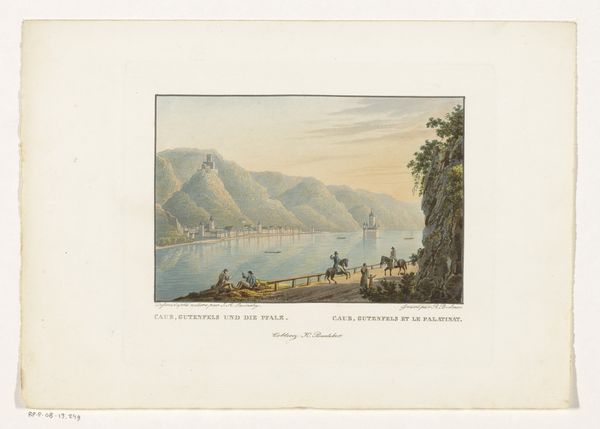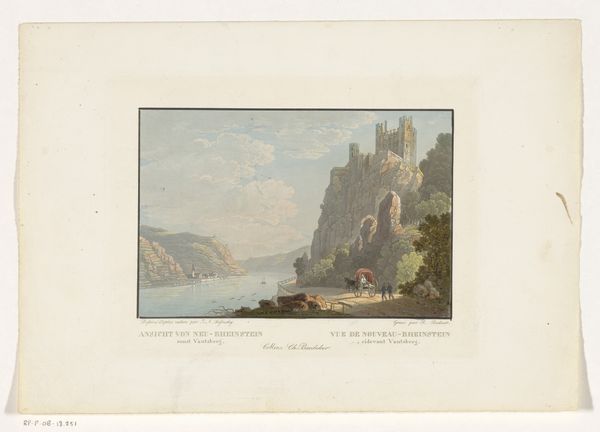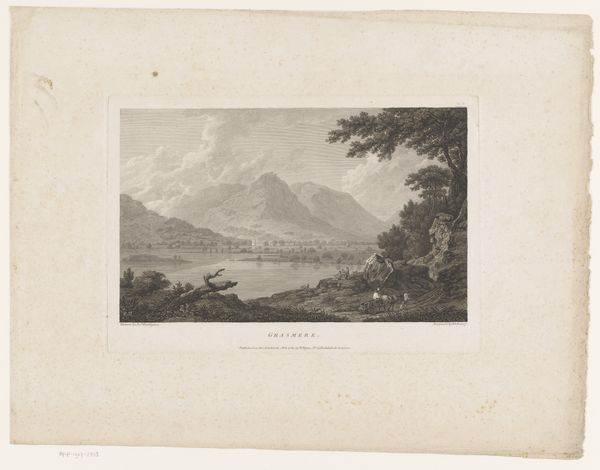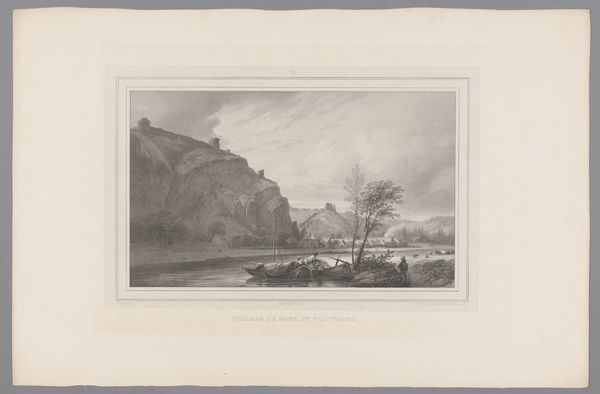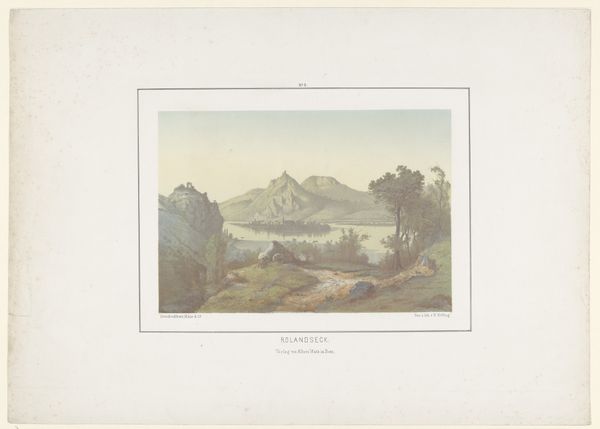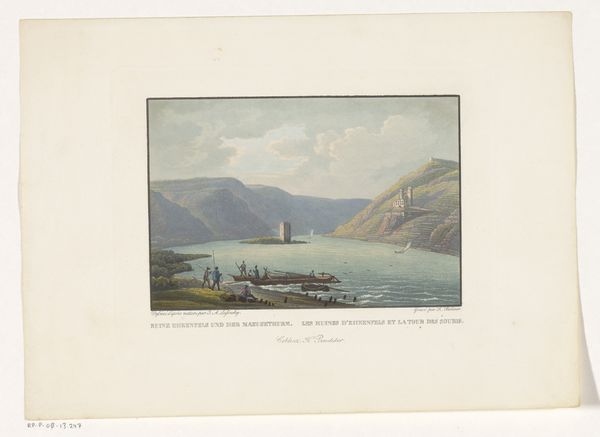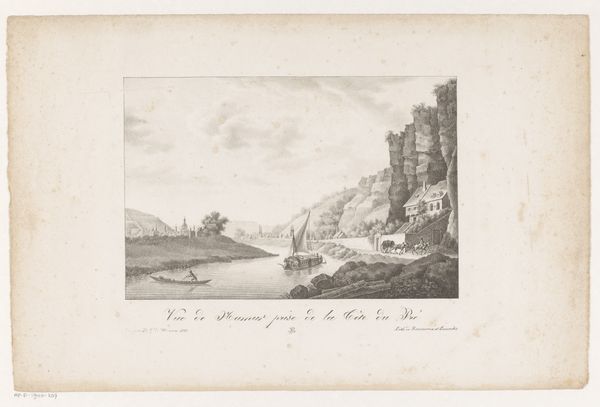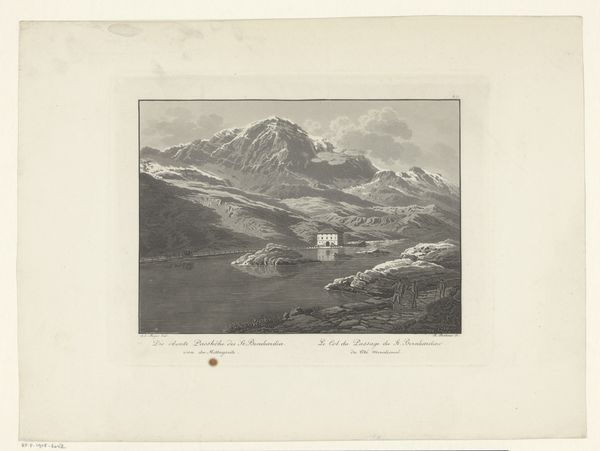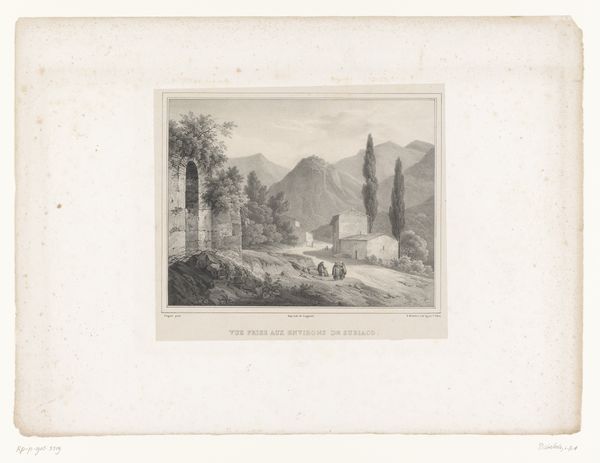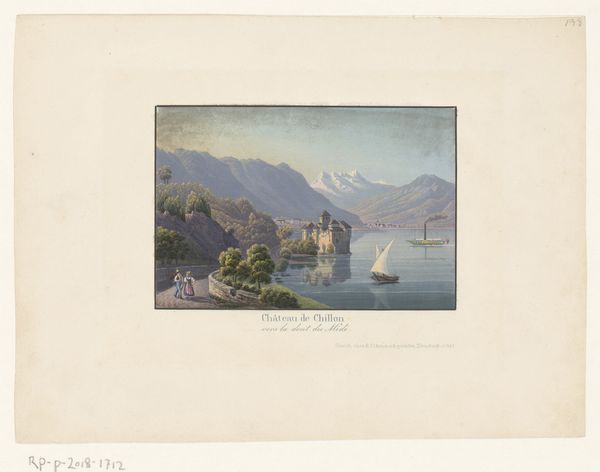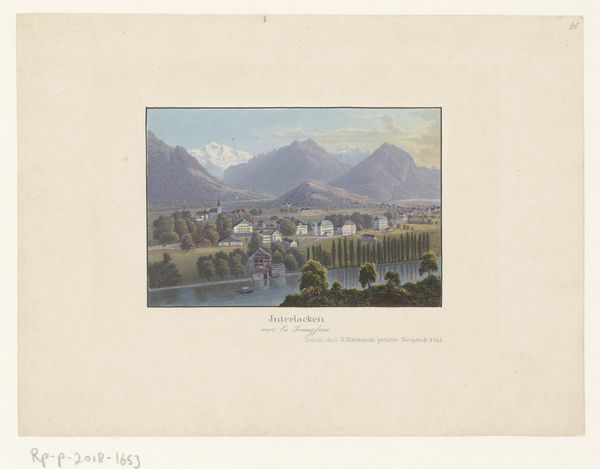
Dimensions: height 130 mm, width 175 mm
Copyright: Rijks Museum: Open Domain
Curator: So, here we have Rudolf Bodmer’s "Gezicht op de Loreley," created sometime between 1832 and 1872, using watercolor on paper. Editor: It's a lovely, almost idyllic scene. The colours are soft, the light is gentle. I’m really drawn to the materiality of the watercolour and the process of creating the different depths and layering the colours. What do you see in this piece? Curator: I see the material reality of landscape painting deeply intertwined with social and industrial shifts. Consider the availability of mass-produced paper and pigments by this period. Bodmer isn't just representing nature, but also engaging with a developing consumer culture that allowed broader access to art-making materials. How might this affect our understanding of his "Romantic" vision? Editor: That's fascinating. So you're suggesting the *availability* of materials, even the "craft" element of watercolour as opposed to oil, shaped the landscape tradition? Curator: Precisely. Watercolour production facilitated replication and circulation of landscape imagery and reveals how technological advancement played a crucial part. Furthermore, think of the cultural implications: How accessible was the depiction of landscape imagery, what economic classes had access to view the imagery produced and how was it used as a cultural reference or point of comparison? Editor: I hadn’t thought about the role of commercial pigments like that, in creating access to a particular style. That does make you question who can create and engage with art in society! Curator: Exactly! Considering production means and circulation contextualises Bodmer's image, shifting focus to production, consumption, and even the labour that supports these artistic outputs. It’s not just *what* is depicted, but *how* and *for whom*. Editor: It sounds like studying those economic conditions can open up what’s really going on in this landscape. I definitely have a different view on watercolours now. Curator: Indeed, by investigating the tools and social structures underpinning Bodmer’s practice, we find an unseen world of material relations informing the 'idyllic' view we perceive.
Comments
No comments
Be the first to comment and join the conversation on the ultimate creative platform.

